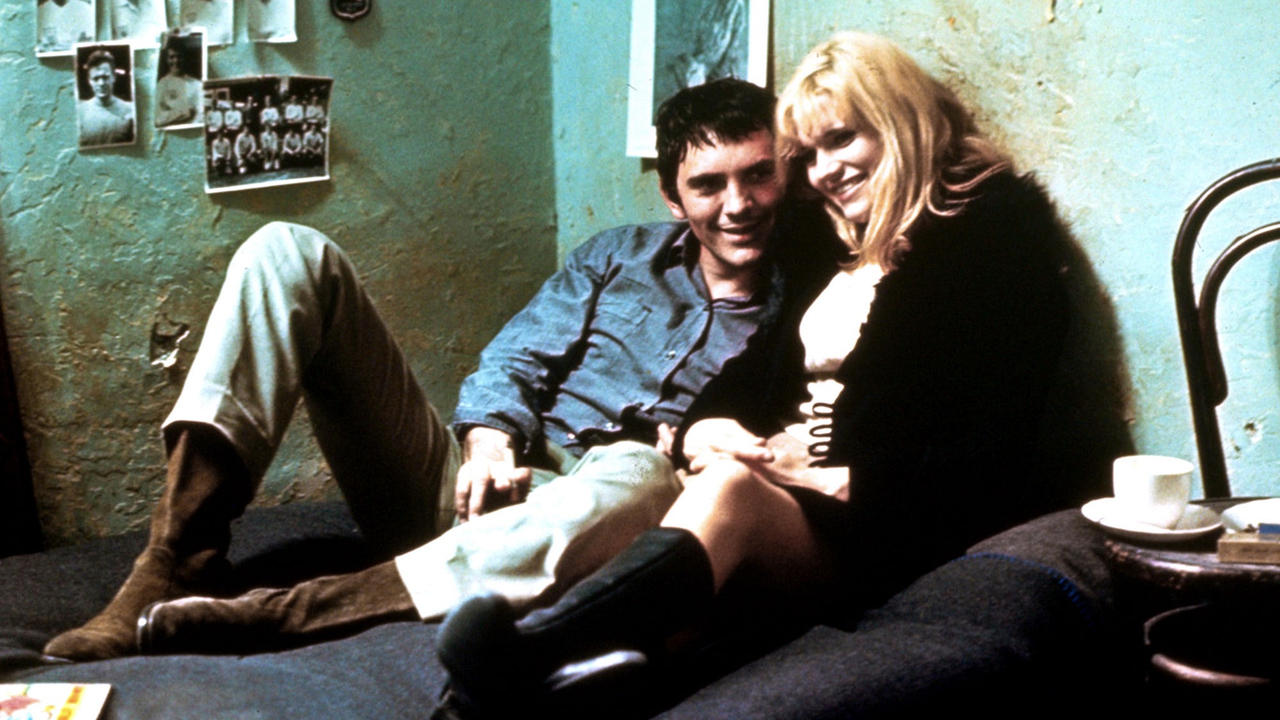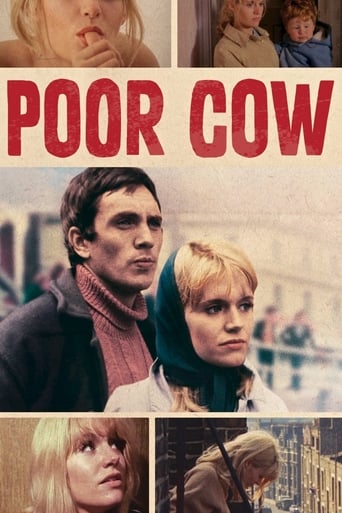Inclubabu
Plot so thin, it passes unnoticed.
ReaderKenka
Let's be realistic.
Teddie Blake
The movie turns out to be a little better than the average. Starting from a romantic formula often seen in the cinema, it ends in the most predictable (and somewhat bland) way.
Paynbob
It’s fine. It's literally the definition of a fine movie. You’ve seen it before, you know every beat and outcome before the characters even do. Only question is how much escapism you’re looking for.
kijii
This documentary-style film, based on Nell Dunn's novel, almost views like a home-movie. As I watched it, I kept checking to see how far into the movie I was and how much longer it would last. This, in itself, was not a good sign. However, Loach does use the environment and surrounding people effectively, with several close ups showing the hopelessness or boredom on people's faces. The main method of the semi-documentary is a series of episodic clips arranged in chronological order; often title cards are used to introduce the episodes. To me, the title cards suggest captions one might find in an old photo album. They are sometimes humorous and sometimes painful, but they help move the story along.The film relates the story of a young North-of-London lower class woman, Joy (Carol White) in the early 60s. She is a victim of her class in that she has never learned to think about aspiring higher. Yet, she does persist and survive. At the beginning of the film, Joy is in the delivery room giving birth to her son, Johnny. I'm not sure if mass Western audiences, at that time, had seen many human births, up close and on screen. So, that may have been new to movie goers at the time. The next scene shows Joy breastfeeding Johnny while her husband, Tom (John Bindon), scolds her for exposing herself, since he was expecting his mates to drop by the house soon. There are early clues that Tom beats and abuses Joy. Although the couple is doing OK financially, things radically change when Tom and his mates rob a store and Tom is caught and sent to prison for several years.Without marketable skills, Joy drifts from job to job (waitress, model, etc.) as she hocks all of her belongings to make ends meet. When she re- meets one of her husband's old crime mates, Dave (Terence Stamp), she falls in love with him and they live together. Unlike Tom—whom she is now trying to divorce while he is in jail--Dave is fun, kind, and loving. Some of the richest and most beautiful scenes of the film reflect the happiness of Joy and Dave. But, when he mugs a rich old woman to steal her jewelry—coupled with his record of previous run-ins with the law--he is sent to prison for twelve years. Joy continues to think of Dave. She also writes him and visits him regularly in jail. While she swears she will wait for him, she continues to have causal affairs with other men and lives from day to day and job to job. As Johnny gets older, Joy remains stuck...Once again, to me, this looks like a well-acted, but poorly-photographed home movie. On the other hand, I may be missing the great movie-making craft that Ken Loach seemed to deliver so well in Kes but missed here.
wvisser-leusden
I suppose you can watch 'Poor cow' in two stages.First of all, as a tale about an ordinary lower class girl who is severely tested in her efforts to make ends meet. Beautifully set in a 19-Sixties London working-class area, this film spares no effort to indulge you in the hard realism of her everyday's life. Also making you part of the girl's dreams about happiness and domestic stability -- not different from many other girls' dreams.After having laid such a solid bottom, 'Poor cow' invites you to connect its tale to the Swinging Sixties. A time when London was the epicenter of many freshly generated whirlwinds.Well, this film's statement seems clear to me: no Sixties-glitter & shine. 'Poor cow' tells us that even in the Sixties everyday life for common people went on as usual. Accentuated by music of Sixties' pop-icon Donovan, you may even detect that newly acquired Sixties-freedom primarily increased pressure on women to expose their nudity.----Apart from all this, 'Poor cow' deserves praise for its excellent acting + shooting. As well as for the credibility of its story -- in a Sixties-environment that surely warms the heart of everyone around at the time. Another Sixties-feature: the film shows a half naked young boy frontally. In 1967 nobody thought much about that, in our times this picture would probably have been censored as child pornography.
Lee Eisenberg
Ken Loach showed the world the down-and-out flip side of Swinging London with "Poor Cow", about London woman Joy (Carol White) hooking up with a thief and having a son with him, only to see the man end up in the slammer. While his friend (Terence Stamp) manages to help her out some, he proves to be little better in what a loser he is. It soon becomes clear to Joy that she's going to have to make a serious decision about where she's going in her life.One thing that I determined - I don't know whether or not this is accurate - was a use of irony in the movie. Her name is Joy, but she experiences no joy in her life. Even if that wasn't intended, it's still a movie that I recommend to everyone. Featuring songs by Donovan (one of which - "Colors" - appeared in another Terence Stamp movie: "The Limey" (which, incidentally, came out in 1999, when I was as old as my parents were when "Poor Cow" came out)).
cooked
Not a film of entertainment, but of real lives & limited ambition for the working class in 60's. Enjoyable because of my upbringing, not sure it'd work for most people. Typical Loach. Full of TV actors/actresses of 70's/80's/90's.

